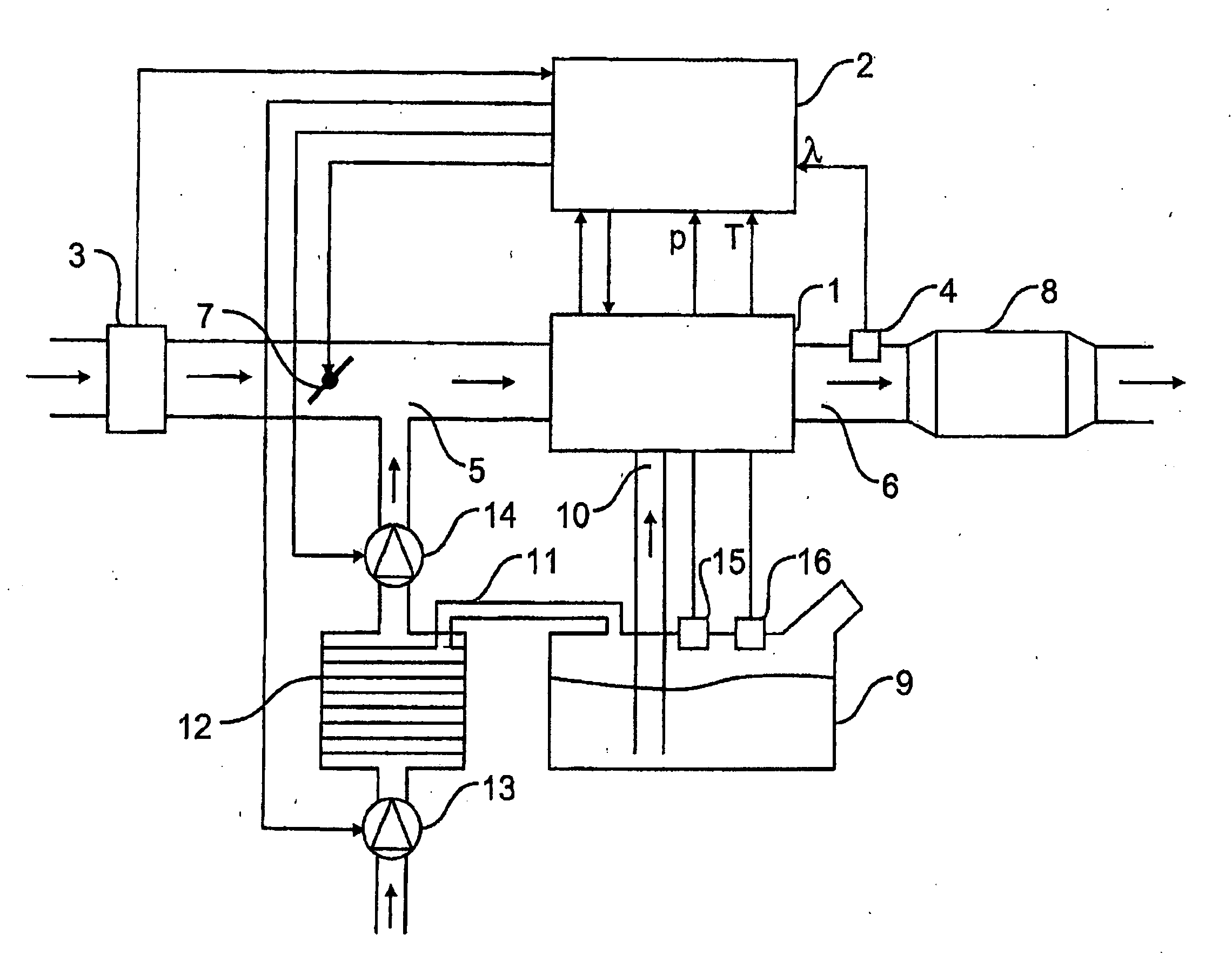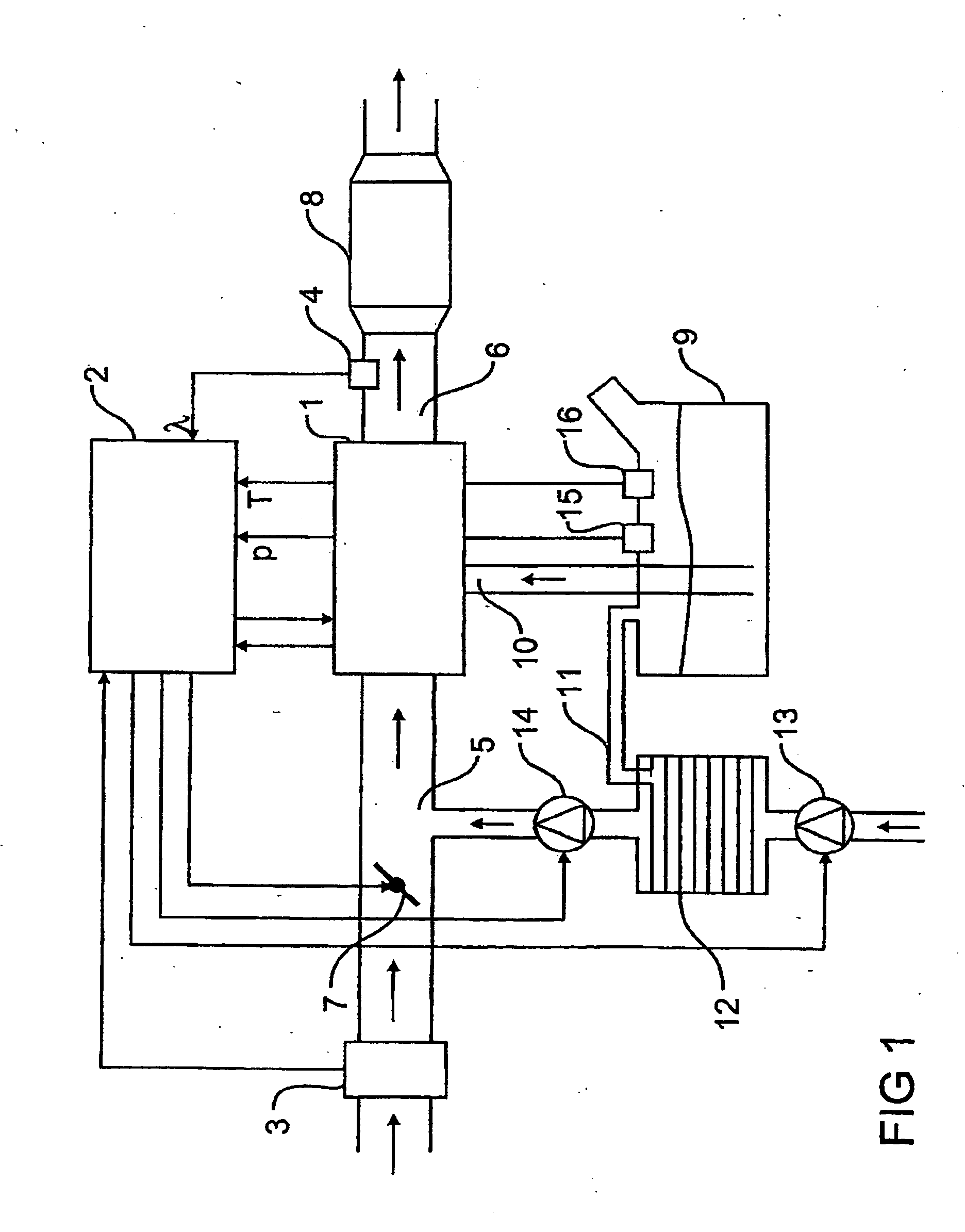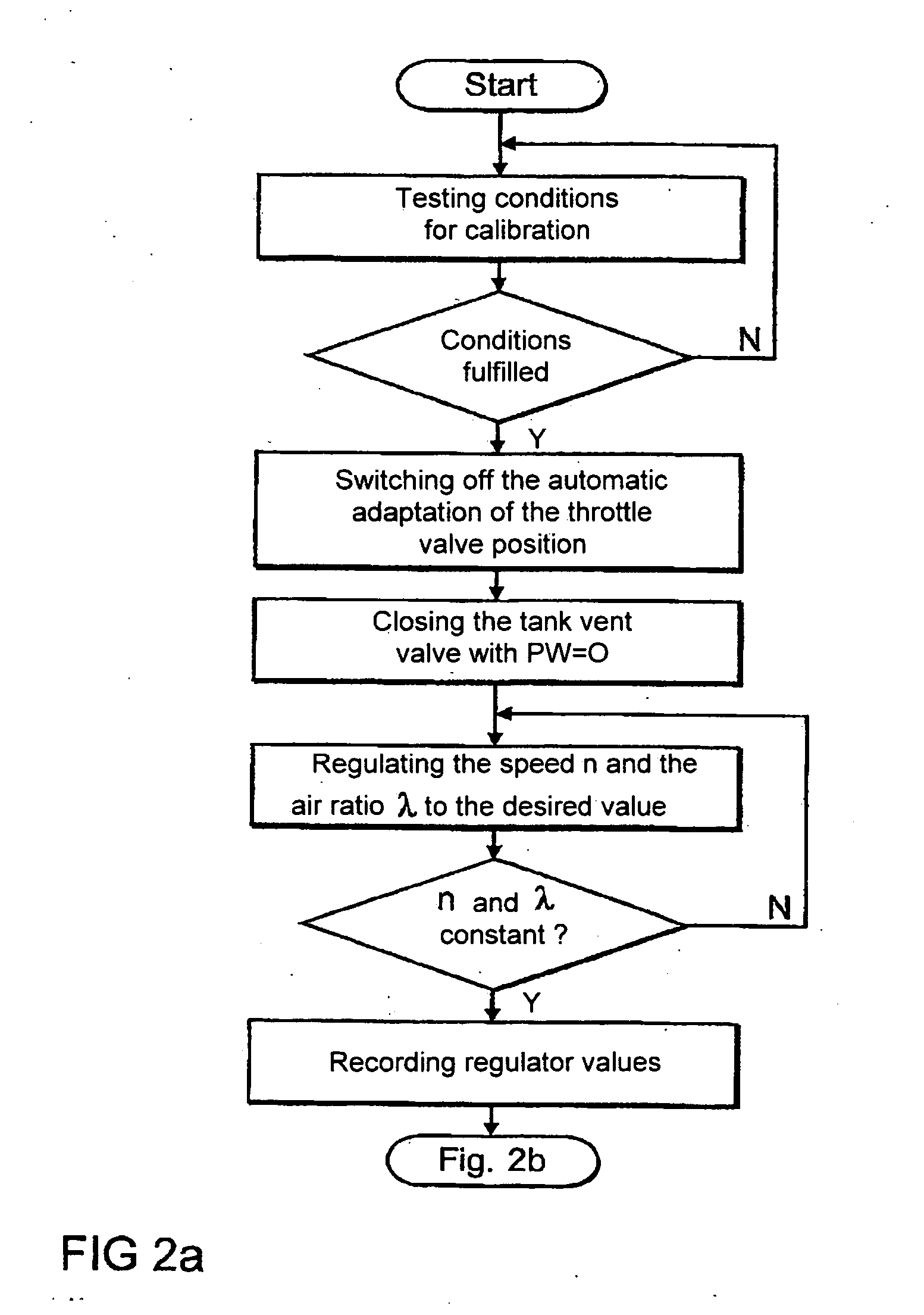Method for controlling a regeneration valve of a fuel vapor retention system
- Summary
- Abstract
- Description
- Claims
- Application Information
AI Technical Summary
Benefits of technology
Problems solved by technology
Method used
Image
Examples
Embodiment Construction
[0033] The representation in FIG. 1 shows an internal combustion engine 1 with an injection system in which case the internal combustion engine 1 is constructed in a conventional way and is therefore only shown diagrammatically.
[0034] The internal combustion engine 1 is controlled by an electronic control unit 2 in which case the control unit 2, for example, specifies the moment of injection as well as the duration of injection of the injection system.
[0035] The control unit 2 evaluates the measuring signals of a mass air flow sensor 3 as well as a lambda sensor 4 as input signals, in which case, the mass air flow sensor 3 is arranged in an intake tract 5 of the internal combustion engine 1 while the lambda sensor 4 is located on the outlet side of the internal combustion engine 1 in an exhaust gas duct 6.
[0036] In addition, a throttle valve 7 is also arranged in the intake tract 5 of the internal combustion engine 1, said throttle valve controlling the mass air flow sensor sucke...
PUM
 Login to View More
Login to View More Abstract
Description
Claims
Application Information
 Login to View More
Login to View More - Generate Ideas
- Intellectual Property
- Life Sciences
- Materials
- Tech Scout
- Unparalleled Data Quality
- Higher Quality Content
- 60% Fewer Hallucinations
Browse by: Latest US Patents, China's latest patents, Technical Efficacy Thesaurus, Application Domain, Technology Topic, Popular Technical Reports.
© 2025 PatSnap. All rights reserved.Legal|Privacy policy|Modern Slavery Act Transparency Statement|Sitemap|About US| Contact US: help@patsnap.com



